I wanted to have a home gaming setup for when COVID finally does go away and we can return to playing games on something approaching a regular schedule. I also drink an unhealthy(?) amount of craft beer. After stumbling across Promethium Forge, an MDF company that specializes in leveled area terrain, I decided to merge these two interests. We’ve previously talked a bit about using their terrain for Necromunda, but today I’m going to go into more detail about the kits they offer and the experience of building and working with them. Specifically, I’m talking about the products offered here, that use cans for terrain construction:
https://everylittlewar.com/collections/promethium-forge
There isn’t a lot of information online about this product so I wanted to put my impressions on paper. The big selling point is that the kits are inter-connectable and cover a very wide area at a low cost. The table coverage above cost $160, and is completely modular.
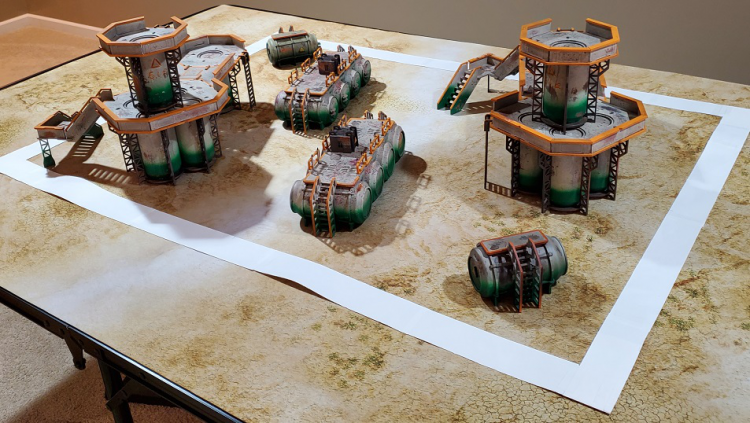
Shown in the photo above are:
2x https://everylittlewar.com/collections/promethium-forge/products/quad-horizontal-can-kit
https://everylittlewar.com/collections/promethium-forge/products/horizontal-chem-tank-kit
https://everylittlewar.com/collections/promethium-forge/products/can-tower-terrain-set
That’s pretty good! By comparison, for the same amount of money you could get this magnificent structure and also some barrels or a forklift or something:
https://www.games-workshop.com/en-US/Void-shield-Generator-2016
So how was this product to assemble, paint and play on?
Product // Assembly // Painting
Note: The two singular horizontal cans were painted as test models and the photographs below aren’t including them.
The raw ingredients included these local craft beer cans:

Midwestern beer snob note: I used Brewdog cans as substitutes for certain local beers that used stickers as labels. Also Platform was really good before it got bought out by AB.
And this ~6 pound pile of wood:

I used these tools in addition to some superglue:
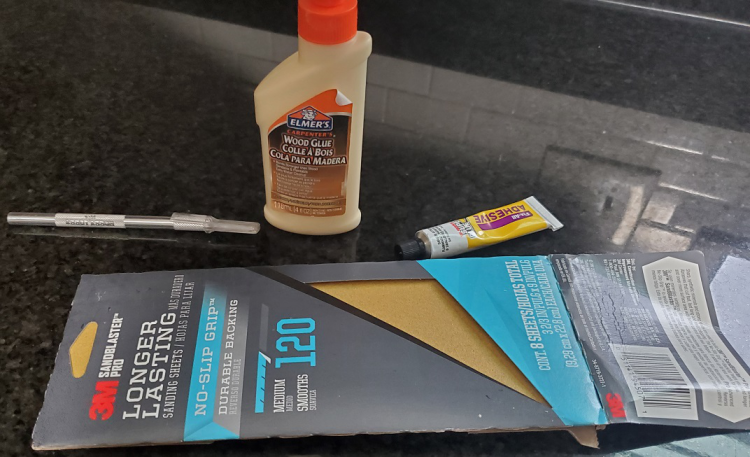
This is what the various MDF templates looked like:
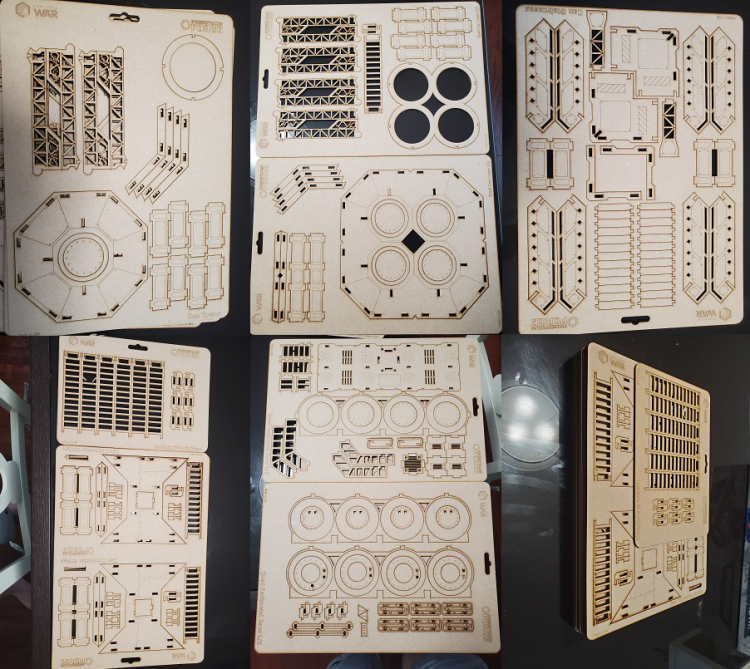
Assembly is not difficult, but instructions only really exist via some YouTube videos, which complicates things a bit.
https://www.youtube.com/watch?v=nO-H8P_BjEc
https://www.youtube.com/watch?v=1bt1DZQ561Y
There not being instructions for the horizontal can kits and only video for the vertical kits is an oversight. A few links to pdfs or image based instructions would not be unwelcome. The only real “gotcha” items in the horizontal can kits is the caps on the cans, which are fitted to the ends of the cans and are sized slightly differently.
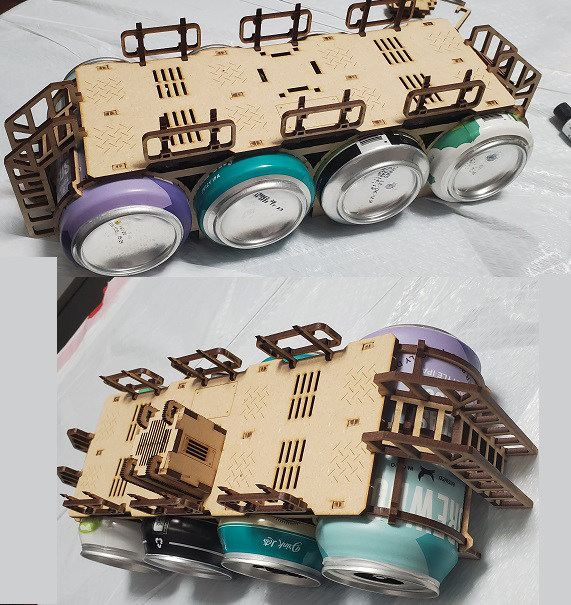
These kits do cover a large area for the price. As an example, this 25 dollar kit blocks a lot of line of sight, and can seat 10 40 mil bases and 26 25 mil bases.
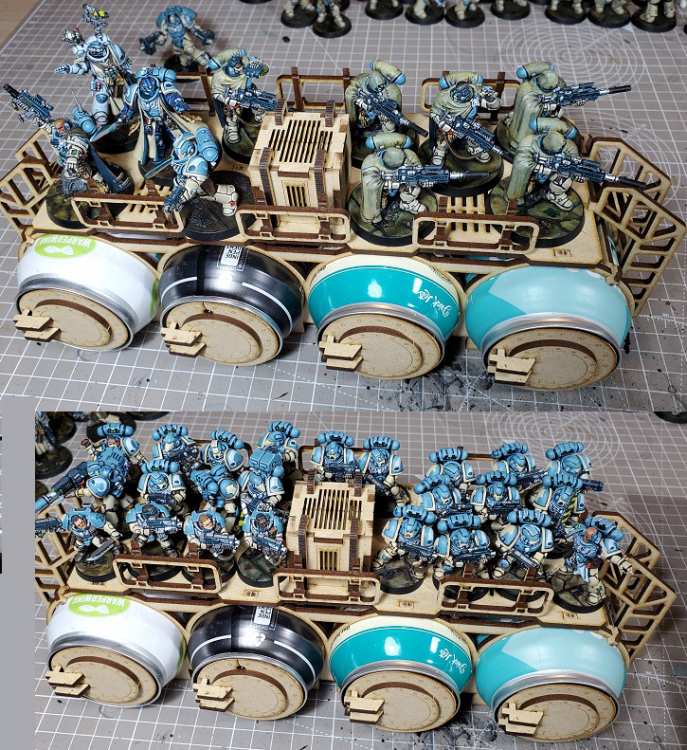
The website says these kits would take ~ 1 hour to assemble altogether, which is hilariously optimistic. It was closer to 6 hours for me. I left the supporting structures off of the vertical cans as I intended to leave them as bare metal.

After priming with an airbrush and base-coating brown I was ready to begin a painting plan I would charitably call optimistic. Do yourself a favor and use the cheapest craft paints you can find at Michael’s.

It turns out painting hundreds of mdf parts via sponge weathering is a great way to wonder whether you are giving yourself tennis elbow.

I then gloss coated these parts, used salt chipping, airbrushed a metallic second layer and repeated the process with the base colors I wanted and added a few details.
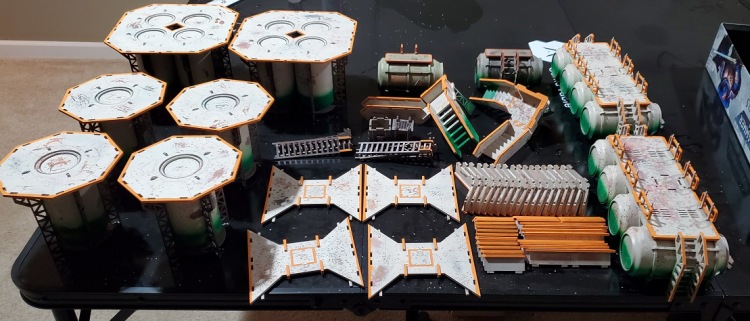

I then used a series of homemade washes to finish the weathering.
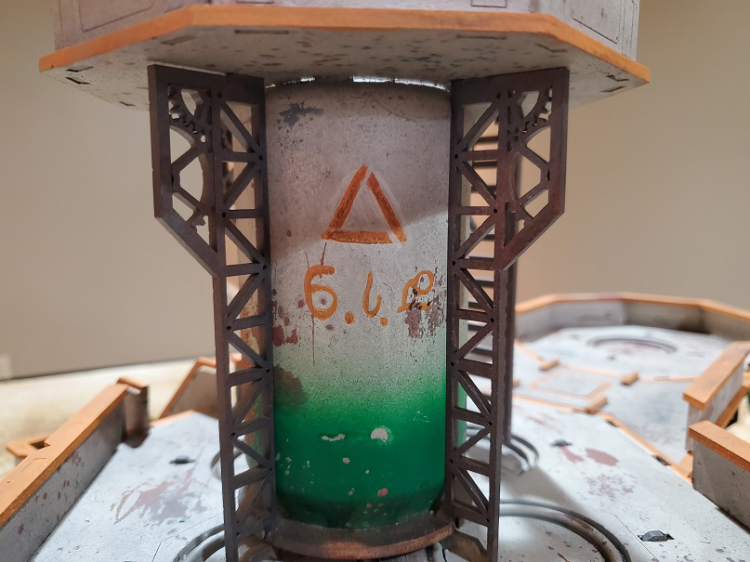
There is one major issue with the product as I see it. After using a matte varnish the assemblies to connect the guard rails and walkways are effectively too thick to effectively slot into the slots designed to secure them and I had to carve them away significantly. I do think connection points stand a solid chance of wearing down or breaking over time. I’m not talking months, but maybe after a few years of use.
44×30″ Tables (1,000 points in 40k):
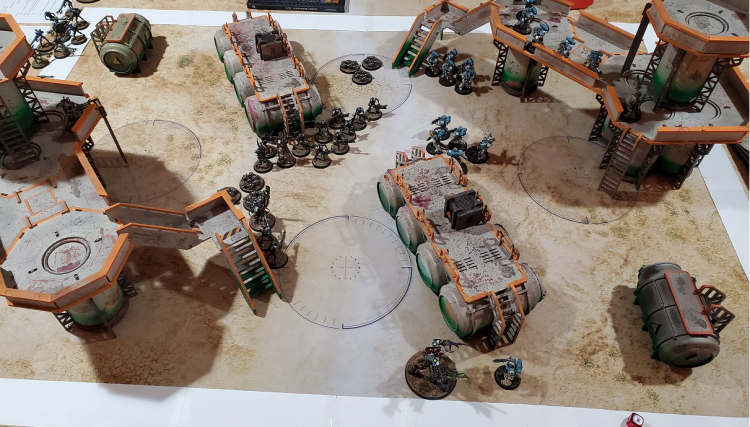
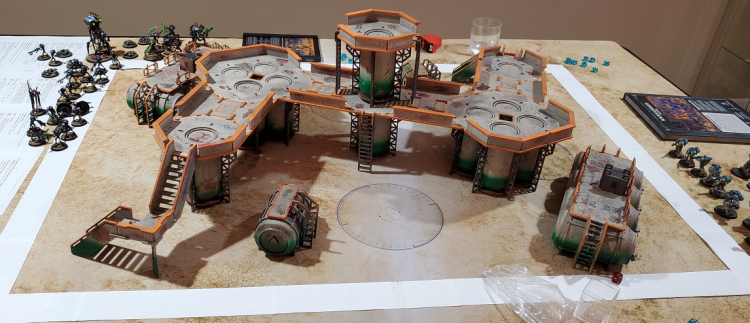
The items linked at the top of the article are enough to give you a very dense layout for a 44×30″ table, or what you’d use to play Strike Force (500 points) and Incursion (1,000 points) as table sizes in Warhammer 40k. The terrain is so dense as to be difficult to even place or move models with large footprints.
44×60″ tables (2,000 points in 40k):
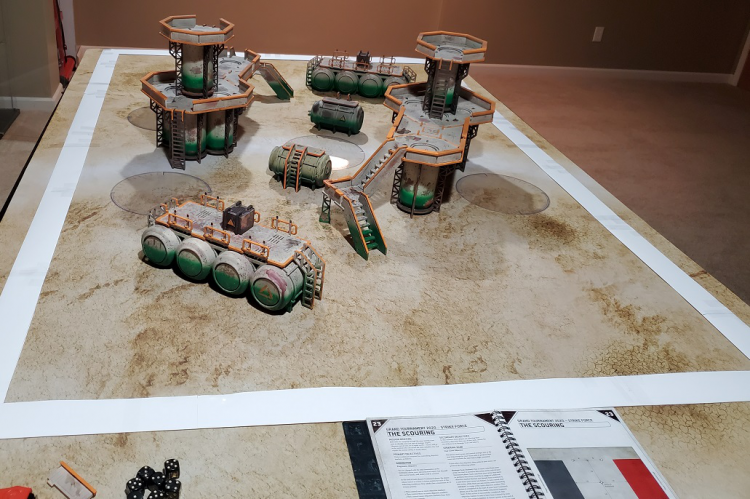
On larger tables – 44×60″ (the size for 2,000 point games of 40k) and 48×72″ the table is a little sparse, but could be more than adequate with a few foam hills or additional ruins. If I were to want to use more kits from the same manufacturer I’d probably spend an additional ~60$ and look at adding something like these:
2x https://everylittlewar.com/collections/promethium-forge/products/spiral-stairs-can-kit
2x https://everylittlewar.com/collections/promethium-forge/products/triple-vertical-can-tower
https://everylittlewar.com/collections/promethium-forge/products/vertical-chem-tank-kit
Overall Impressions

After playing about 5-6 test games with this terrain I have an enthusiastic but qualified recommendation. Every Little War’s customer service is excellent, the quality control is solid and I feel the prices are reasonable. For the money, this is a fantastic way to get a compelling board with relatively little specific experience.
I have cut foam core hills and made some basic scratch built terrain. It all looked basic at best and like painted garbage (which it was) at worst. If you have the experience to make compelling scratch terrain $160 doesn’t make sense for a table. If you have an unlimited budget to drop probably 6-8 times the price on plastic terrain these products also don’t make sense. I expect there are lots of folks in the middle like me who are going to be very happy with this product.
For lack of a better descriptor, these pieces are lower resolution than plastic terrain, but with some basic paint techniques they look very presentable. I spend 6-8 hours on one infantry model for my marines and I don’t feel this terrain as I painted it detracts. If you want to put more effort into mdf there are methods out there to make them look higher detail.
Midwinter Minis Talk About Ways to Make MDF look awesome
Black Magic Craft talks about assembling and painting MDF terrain
In fact, browsing other providers on Every Little War I recognized some terrain from the Nova Narrative in 2019 that was used on a table I played on. I had no idea at the time it was mdf, despite moving models on it for a couple hours.
As far as cons go I do feel like they could have done a better job explaining the assembly process. I also think they could have done a better job designing the tolerances of the connecting ports for the pieces, making the slots slightly wider would allow you to secure the assemblies without wearing paint off or worrying about breaking pieces. I have no doubt, though, that they will hold up to personal use at a home table.
Final Verdict
As someone who cares about the aesthetics of the game but didn’t want to spend a ton of money, and as someone who did not have a wealth of specific experience in building terrain, I found this product to be exactly what I was looking for.
Have any questions or feedback? Drop us a note in the comments below or email us at contact@goonhammer.com.


